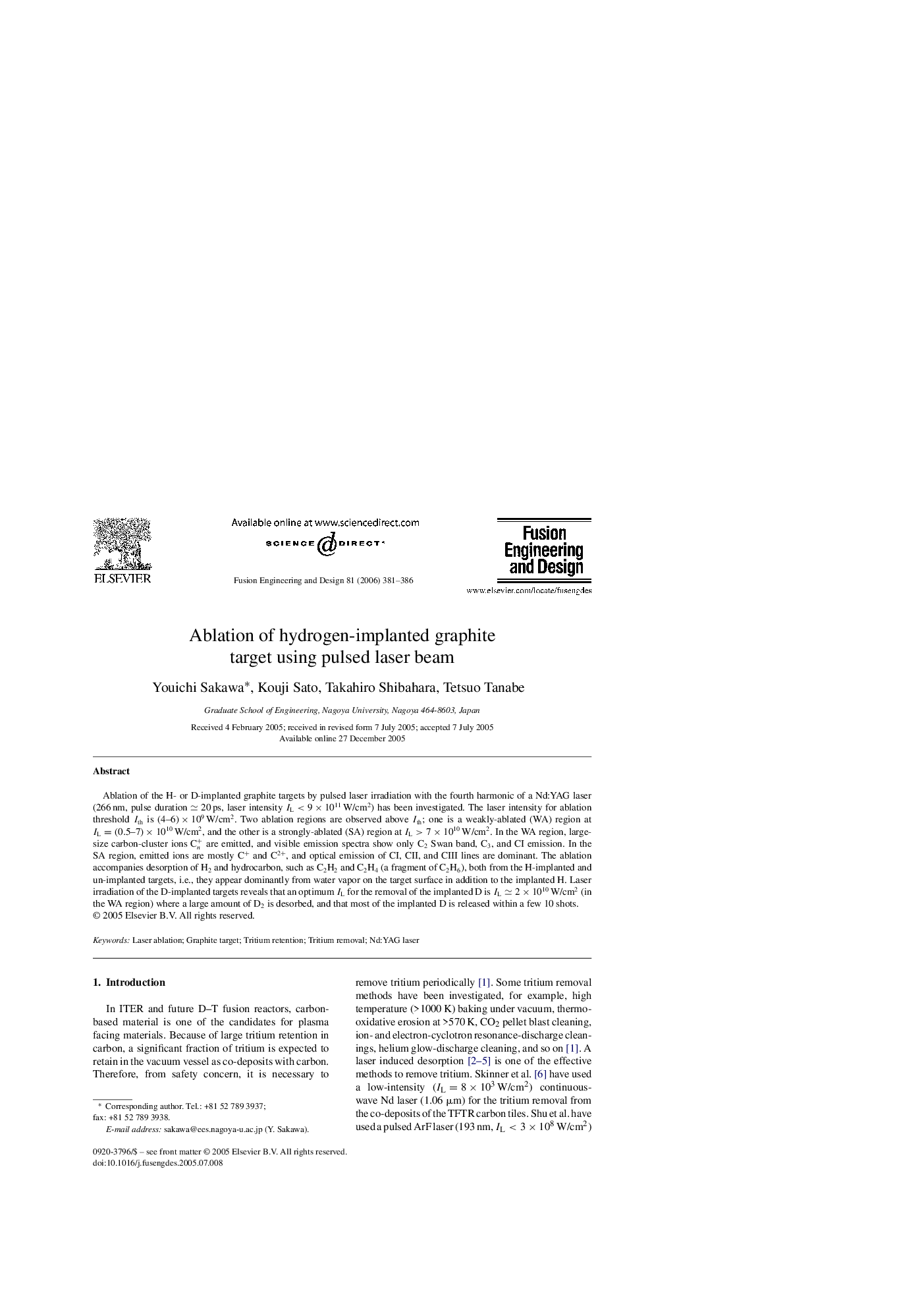| Article ID | Journal | Published Year | Pages | File Type |
|---|---|---|---|---|
| 273476 | Fusion Engineering and Design | 2006 | 6 Pages |
Ablation of the H- or D-implanted graphite targets by pulsed laser irradiation with the fourth harmonic of a Nd:YAG laser (266 nm, pulse duration ≃20≃20 ps, laser intensity IL<9×1011IL<9×1011 W/cm2) has been investigated. The laser intensity for ablation threshold IthIth is (4–6)×109(4–6)×109 W/cm2. Two ablation regions are observed above IthIth; one is a weakly-ablated (WA) region at IL=(0.5–7)×1010IL=(0.5–7)×1010 W/cm2, and the other is a strongly-ablated (SA) region at IL>7×1010IL>7×1010 W/cm2. In the WA region, large-size carbon-cluster ions Cn+ are emitted, and visible emission spectra show only C2 Swan band, C3, and CI emission. In the SA region, emitted ions are mostly C+ and C2+, and optical emission of CI, CII, and CIII lines are dominant. The ablation accompanies desorption of H2 and hydrocarbon, such as C2H2 and C2H4 (a fragment of C2H6), both from the H-implanted and un-implanted targets, i.e., they appear dominantly from water vapor on the target surface in addition to the implanted H. Laser irradiation of the D-implanted targets reveals that an optimum ILIL for the removal of the implanted D is IL≃2×1010IL≃2×1010 W/cm2 (in the WA region) where a large amount of D2 is desorbed, and that most of the implanted D is released within a few 10 shots.
